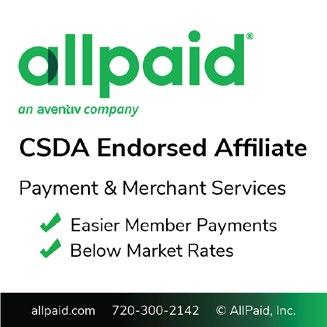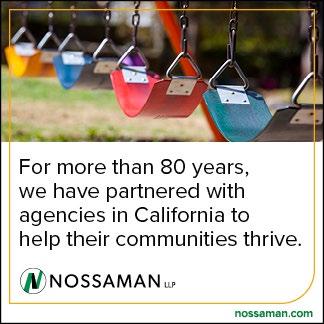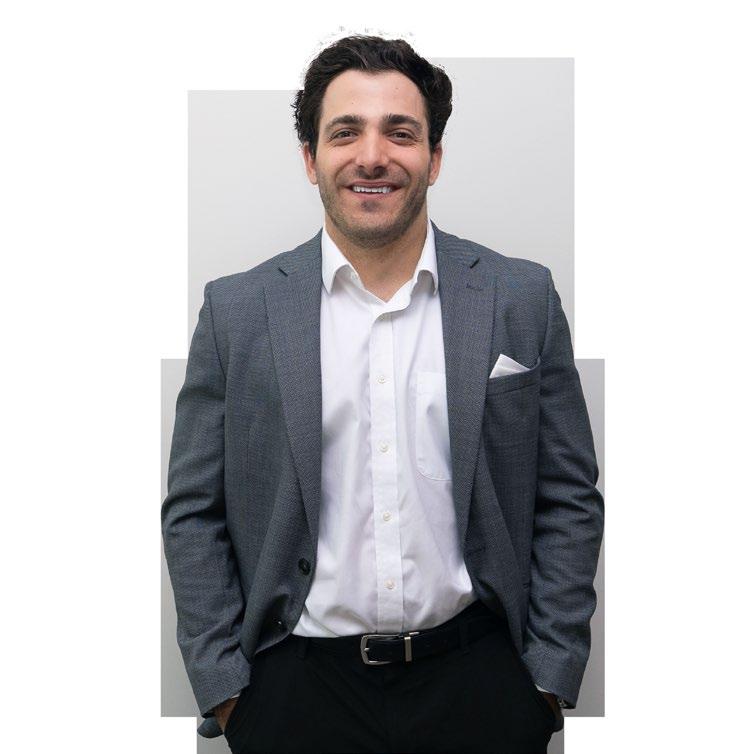



Brad Montgomery, Keynote Speaker for the 2025 CSDA Annual Conference & Exhibitor Showcase







Brad Montgomery, Keynote Speaker for the 2025 CSDA Annual Conference & Exhibitor Showcase


The California Special Districts Alliance is a collaborative partnership between the California Special Districts Association (CSDA), the CSDA Finance Corporation (CSDAFC), and the Special District Risk Management Authority (SDRMA). These three highly respected statewide organizations join forces to help special districts in California better serve their communities.

PETER KAMPA, CSDM, PRESIDENT, Groveland Community Services District
LORENZO RIOS, CSDM, VICE PRESIDENT, Clovis Veterans Memorial District
ANTONIO MARTINEZ, SECRETARY, Contra Costa Water District
DON BARTZ, CSDM, TREASURER, Phelan Pinon Hills Community Services District
ELAINE MAGNER, PAST PRESIDENT, Pleasant Valley Recreation and Park District
RYAN CLAUSNITZER, CSDM, Alameda County Mosquito Abatement District
SCOTT DUFFIELD, CSDM, Heritage Ranch Community Services District
VINCENT FERRANTE, Moss Landing Harbor District
JERRY L. GILMORE, Truckee Sanitary District
CURTIS JORRITSMA, Hilmar County Water District
JO MACKENZIE, Vista Irrigation District
NOELLE MATTOCK, El Dorado Hills Community Services District
GREG P. ORSINI, McKinleyville Community Services District
PATRICK OSTLY, North of River Sanitary District #1
FRED RYNESS, Burney Water District
ARLENE SCHAFER, Costa Mesa Sanitary District
KIM SENEY, Gold Mountain Community Services District
KATHRYN SLATER-CARTER, San Mateo County Harbor District
NEIL MCCORMICK, Chief Executive Officer
MEGAN HEMMING, Chief Professional Development Officer
MUSTAFA HESSABI, Chief Counsel
KYLE PACKHAM, Chief Advocacy & External Affairs Officer
CASSANDRA STRAWN, Chief Member Services & Communications Officer
RICK WOOD, Chief Finance & Operations Officer
TOMICKO ABELLA, Member Services Representative
AARON AVERY, Director of State Legislative Affairs
ANNA CALLAHAN, Legislative Assistant
EMILY CHA, Database & Online Communities Specialist
MARCUS DETWILER, Legislative Representative
BRENT FARRAR, Design & Websites Manager
AUBREY GOHL, Member Services Representative
JOSE GUERRERO, Graphic Design/Video Specialist
COLLEEN HALEY, Public Affairs Field Coordinator
CASSIE HASKINS, Member Services Representative
LILIA M. HERNANDEZ, Associate Legislative Analyst
MORGAN LESKODY, Communications Specialist
MICHAEL MEYER, Senior Member Services Specialist
CHRIS NORDEN, Public Affairs Field Coordinator
RICHELLE NOROYAN, Public Affairs Field Coordinator
CHRIS PALMER, Senior Public Affairs Field Coordinator
AMBER PHELEN, Management Analyst
RACHAEL POPPINO, Professional Development Coordinator
OLIVIA ROBERTSON, Member Services Specialist
JENNIFER SMITH, Professional Development Coordinator
OPHELIA SZIGETI, Legislative Analyst
ANTHONY TANNEHILL, Legislative Representative
ERASMO VIVEROS, Public Affairs Field Coordinator
DANE WADLÉ, Senior Public Affairs Field Coordinator
KRISTIN WITHROW, Communications Specialist
SANDY SEIFERT-RAFFELSON, PRESIDENT, Herlong Public Utility District
ROBERT SWAN, VICE PRESIDENT, Groveland Community Services District
JESSE CLAYPOOL, SECRETARY, Honey Lake Valley Resource Conservation District
MEMBERS OF THE BOARD
ROBERT HOUSLEY, CSDM, Midway City Sanitary District
MIKE SCHEAFER, Costa Mesa Sanitary District
TIM UNRUH, CSDM, Kern County Mosquito & Vector Control District
THOMAS WRIGHT, Clovis Veterans Memorial District
MICHAEL KRONBETTER, Public Financial Management
DEREK BURKHALTER, Bickmore Actuarial
MICHAEL BLOSS, River City Bank
CHRIS WIEGMAN, GroupOne
ANN SIPRELLE, Best Best & Krieger, LLP
KARL SNEARER, Apex Insurance Agency
DOUG WOZNIAK, Alliant Insurance Services, Inc.
DEBBIE YOKOTA, CPCU, Interim Chief Executive Officer
MATT CLUTTERBUCK, CPA, MBA, Chief Financial Officer
ENRIQUETA CASTRO, CSP, Interim Chief Risk Officer
WENDY TUCKER, AU, Underwriting/Program Manager
ALANA LITTLE, Health Benefits Manager
DANNY PEÑA, SIP, WCCP, Workers’ Compensation Claims Manager
ROBERTO LOZANO, Liability Claims Manager
PETR KOVALCHUK, CPA, Finance Manager
JASON THORN, Data Architect
MARGARITO CRUZ, Senior Accountant
ERIC LUCERO, ARM, Senior Risk Control Specialist
GUILLERMO DE LA TORRE, Senior Risk Control Specialist
TAMARA BAKKIE, SIP, WCCA, Senior Workers’ Compensation
Claims Examiner
JOHN PESHKOFF, SIP, WCCA, Senior Workers’ Compensation
Claims Examiner
MARTHA WARREN, SIP, WCCA, Senior Workers’ Compensation Claims Examiner
MICHELLE BROWN, Health Benefits Specialist II
TERESA GUILLEN, Program Specialist II
KEITH IKAMI, Liability Claims Examiner II
LISA SANDOVAL, Member Services Specialist I
CANDICE RICHARDSON, Management Analyst
MARIETTA HARRISON, SIP, WCCA, Future Medical Claims Examiner
CHER DARLING, Workers’ Compensation Claims Assistant
LILLI VINN, Accounting Technician
Special District Risk Management Authority 1112 I Street, Suite 300 Sacramento, CA 95814
tel: 800.537.7790 www.sdrma.org
CSDAFC Board and Staff
OFFICERS
JO MACKENZIE, PRESIDENT, Vista Irrigation District
VINCE FERRANTE, VICE PRESIDENT, Moss Landing Harbor District
ARLENE SCHAFER, SECRETARY, Costa Mesa Sanitary District
GREG P. ORSINI, TREASURER, McKinleyville Community Services District
MEMBERS OF THE BOARD
RONALD COATS, DIRECTOR, East Valley Water District
GLENN LAZOF, Regional Government Services Authority
ELAINE MAGNER, CSDM, DIRECTOR, Pleasant Valley Recreation and Park District
CONSULTANTS
RICK BRANDIS, Brandis Tallman, a Division of Oppenheimer & Co. Inc.
JEFF LAND Brandis Tallman, a Division of Oppenheimer & Co. Inc.
STEFAN MORTON, Municipal Finance Corporation
WILLIAM MORTON, Municipal Finance Corporation
ALBERT REYES, Kutak Rock LLP
DMITRY SEMENOV, Ridgeline Municipal Strategies, Consultant to the Working Capital Financing Program
NICOLE TALLMAN, Brandis Tallman, a Division of Oppenheimer & Co. Inc.
STAFF
NEIL MCCORMICK, Chief Executive Officer
DAVID MCMURCHIE, Legal Counsel
MICHAEL MEYER, Senior Member Services Specialist
AMBER PHELEN, Management Analyst
RICK WOOD, Chief Finance & Operations Officer
CSDA Finance Corporation 1112 I Street, Suite 200, Sacramento, CA 95814 tel: 877.924.2732 www.csdafinance.net
For editorial or advertising inquiries: Phone - 877.924.2732 Email - membership@csda.net
California Special Districts Association 1112 I Street, Suite 200 Sacramento, CA 95814 toll-free: 877.924.2732 www.csda.net
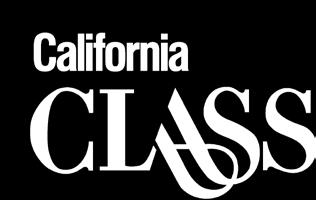









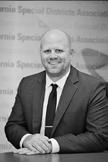
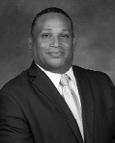




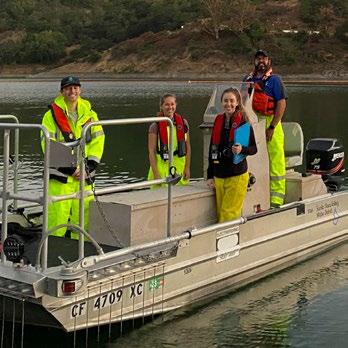
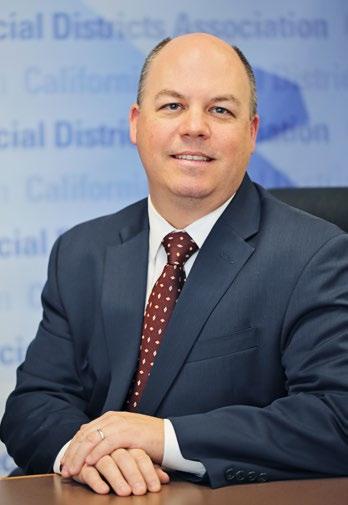
CSDA aims to support members in reducing costs and saving time through our many value-added benefit programs. I’m excited to announce a powerful new member benefit through a partnership between CSDA and Amazon Business. This collaboration is designed to support districts with cutting-edge tools, exclusive discounts, and enhanced purchasing power—at no cost.
As part of CSDA membership, districts now receive complimentary Amazon Business Prime membership, a benefit valued at up to $3,499 per year.
Through the program, your district gains access to:
• Fast, free shipping on millions of items
• Unlimited users per account to enable seamless team access
• Exclusive business-only pricing and up to 25 percent off thousands of products
• Spend analytics tools for greater transparency and oversight
• Guided buying features to enforce procurement policies; and
• A $5,000+ Pay by Invoice credit line with 30-day payment terms
This new benefit empowers special districts to modernize their procurement processes, reduce administrative burdens, and ultimately save money. From office and maintenance supplies to safety equipment and technology, Amazon Business simplifies purchasing while enhancing compliance and efficiency.
We know the unique challenges special districts face—limited budgets, lean staffing, and increasing demands. That’s why we’re committed to offering solutions that deliver real, measurable value to CSDA members. This new member benefit is a direct result of that commitment.

csda.net/amazon-business
To take advantage of this offer as a CSDA member, visit our dedicated webpage using the QR code.
Thank you for the work you do every day in service to your communities. We are proud to support you with resources like this and look forward to bringing you more value through your CSDA membership.
The Special District Leadership Academy (SDLA)—CSDA’s signature curriculum-based governance training—is hitting the road this fall with two opportunities to attend. Firsttime participants can join us in Redding, October 5–8, or attend in Monterey, November 16–19, which includes tracks for both first-time and returning attendees.
CSDA’s 2025 Special District Leadership Academy Conference
October 5–8, 2025 | Redding
November 16-19, 2025 | Monterey
Network with peers, gain practical strategies, and strengthen your district’s leadership. Don’t miss this opportunity.
REGISTER TODAY!

https://qrco.de/bdmscv

Build your skills and stay current with sessions tailored for new and returning Board Secretaries and Clerks. October 27–29, 2025 | Sonoma County
LEARN MORE!

https://qrco.de/bd2072

Board Secretaries and Clerks are also invited to gather in beautiful Sonoma County, October 27–29, for the Board Secretary/Clerk Conference. This event features optional pre-conference workshops, tracks tailored to both new and returning attendees, and some festive fall fun—including trick-or-treating with our exhibitors.
Visit csda.net for more information and to register for any of these conferences!






















Planning to attend a CSDA conference or event? The
CSDA The HUB mobile app makes it easy to map out your schedule, connect with fellow attendees, and access important resources—all in one place. Whether you’re on the go or between meetings, it’s your one-stop shop for realtime connections and essential tools to support your work.
CSDA’s Career Center is designed to help connect top talent with California’s special districts. Agencies can post job openings, search for opportunities, and access professional development tools to support long-term success. Explore the Career Center at www.csda.net/career-center to unlock new opportunities.
Representing California public agencies for over 70 years.
The 2025 CSDA Special Districts Legislative Days brought together district leaders from across California for two impactful days of education, advocacy, and connection. With over 80 legislative meetings scheduled, attendees had direct opportunities to engage with lawmakers on key issues affecting their communities. Dynamic general sessions, timely policy updates, and
collaborative networking events empowered special district representatives to elevate their voices at the Capitol. From expert panels to peer exchange, the event fostered a shared commitment to good governance and public service. CSDA once again delivered a premier platform for strengthening the influence and unity of California’s special districts.
1 Senator Grove connects with special district leaders at the Mayahuel reception during Legislative Days.
2 Senator Seyarto joins attendees at the Special Districts Legislative Days reception.
3 Senator Blanca Rubio joins CSDA CEO Neil McCormick for a photo.
4 CSDA’s Public Affairs Coordinator, Erasmo Viveros, poses for a photo with CSDA Board Members Lorenzo Rios and Patrick Ostly, along with Kern LAFCO Executive Officer Blair Knox.
5 After delivering an inspiring address on the impact of special districts, 2024 CSDA Legislator of the Year Senator Blanca Rubio was presented with her award by CSDA Board President Pete Kampa.
6 Senator Ochoa Bogh meets with Special Districts Legislative Days attendees.
7 Participants gather at the 2025 Special Districts Legislative Days to advocate for local service priorities, engage with state lawmakers, and learn about CSDA’s ongoing advocacy initiatives.
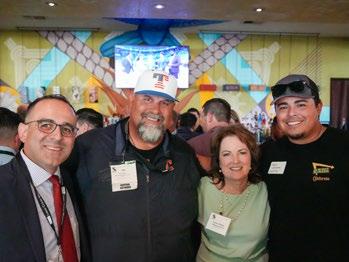


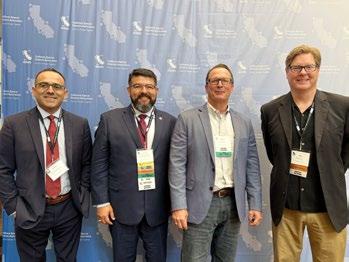
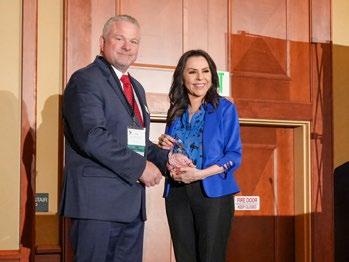
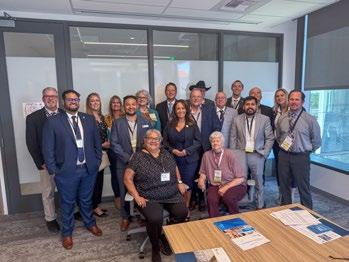


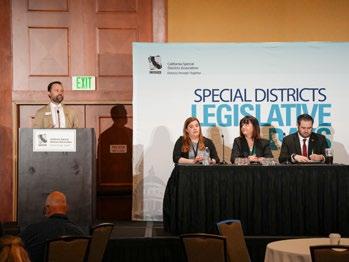

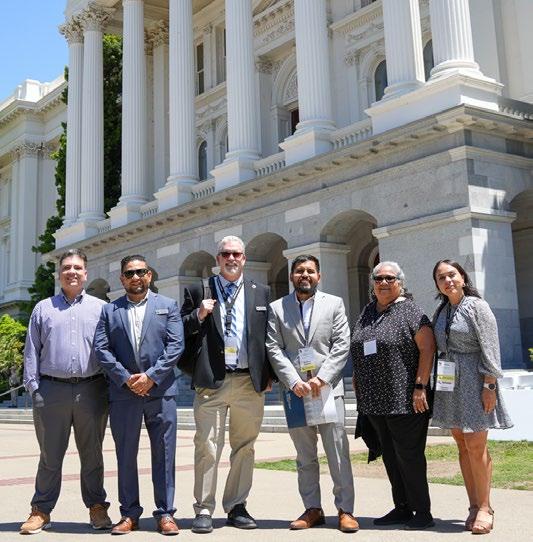


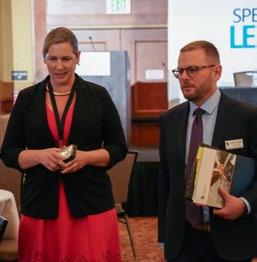
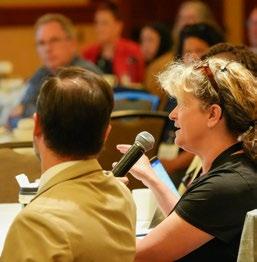

CSDA Annual Conference & Exhibitor Showcase
August 25 - 28, 2025, Monterey
Special Districts Leadership Academy (North)
October 5 - 8, 2025, Redding
Board Secretary/Clerk Conference
October 27 - 29, 2025, Sonoma County
Special Districts Leadership Academy (Coastal)
November 16 – 19, 2025, Seaside (Monterey Area)
Pre-Annual Conference Workshop: SDLA Governance Foundations
August 25, Monterey, from 9:00 a.m. to 3:30 p.m.
Pre-Annual Conference Workshop: So, You Want to Be a GM?
August 25, Monterey, from 9:00 a.m. to 3:30 p.m.
Virtual Workshop: Organizational Development
October 1, from 9:00 a.m. to 12:00 p.m.
Virtual Workshop: HR Boot Camp for Special Districts
October 15, from 9:00 a.m. to 12:00 p.m.
In-Person Workshop: Overview of Special District Laws
November 3, Sacramento, from 9:00 a.m. to 4:00 p.m.
Virtual Workshop: Financial Management for Special Districts
November 5, from 9:00 a.m. to 12:00 p.m.
Virtual Workshop: Supervisory Skills for the Public Sector
November 12, from 9:00 a.m. to 12:00 p.m.
Virtual Workshop: SDLA Module 4 Board’s Role in Human Resources
December 3, from 9:00 a.m. to 12:00 p.m.
Do’s and Don’ts of Initiative Campaigns
Sep 9, 2025, from 11:00 a.m. to 12:00 p.m.
California Government Compensation
Reporting Rules and Requirements
Sep 16, 2025, from 10:00 to 11:00 a.m.
Dealing with Evolving Boundaries and Boards
By - Division, Voting, Vacancies and More
Sep 23, 2025, from 10:00 to 11:00 a.m.
Leadership Lessons with Finance Professionals
Sep 26, 2025, from 2:00 to 3:00 p.m.
Sexual Harassment Prevention Training for Supervisors
Oct 14, 2025, from 10:00 a.m. to 12:00 p.m.
Webinar: Sexual Harassment Prevention for Non-Supervisors
October 16, 2025, from 1:00 to 2:00 p.m.
Webinar: Ethics AB 1234 Compliance Training
Oct 21, 2025, from 10:00 a.m. to 12:00 p.m.
Webinar: Accommodating Mental Health Disabilities - Strategies for Success
Nov 4, 2025, from 10:00 to 11:00 a.m.
Webinar: General Manager Evaluations: A Strategic Approach
Dec 2, 2025, from 10:00 a.m. to 12:00 p.m.

To view more details and to register for conferences, events, workshops or webinars go to the CSDA Events Page https://qrco.de/bddc8t
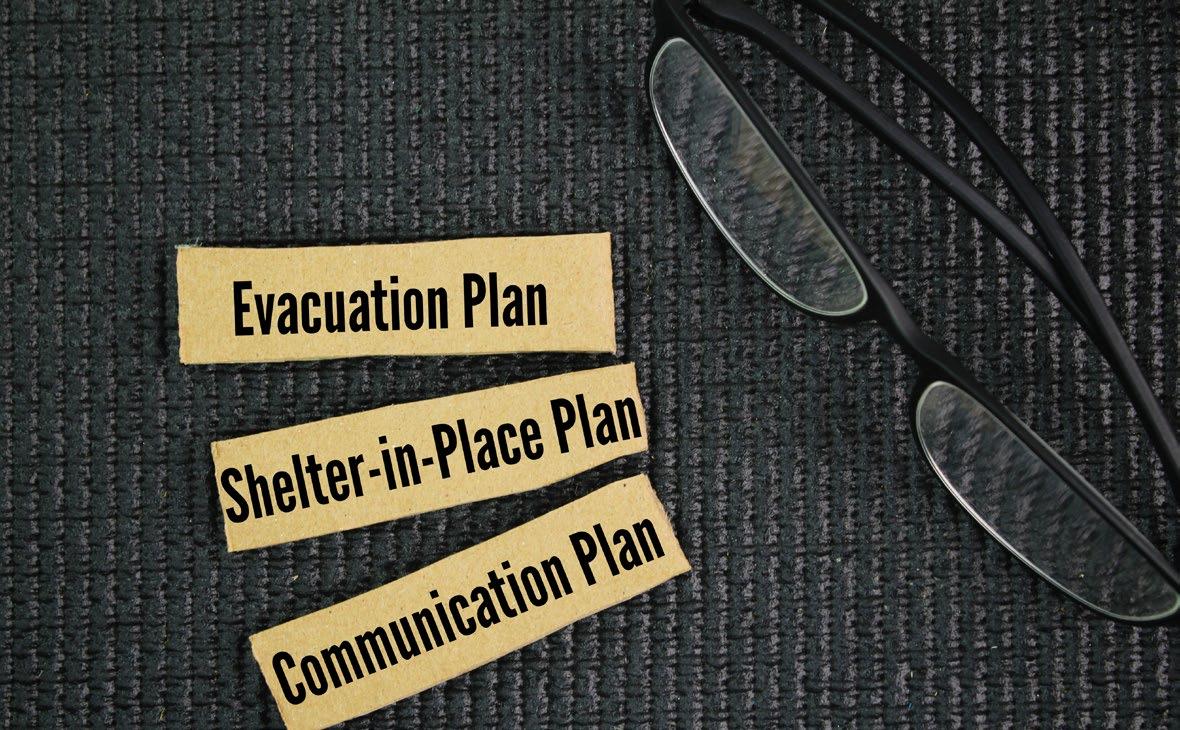
By Tony Coletta, Senior Advisor, Jacob Green and Associates (JGA)
Emergency planning is always a high priority—until the demands of daily business operations push it aside. What was once number ‘1’ soon becomes number ‘2,’ lingering in a perpetual state of importance without action. That changes when the CEO or Board inquires about its status, or when a critical incident shifts priorities, prompting renewed focus following the post-incident afteraction review.
The timing is right, let’s get it done!
There is the ‘why,’ and then there is the ‘WHY.’ Statutory or regulatory requirements often dictate the first but let’s distill it down to one core theme: You do not blindly run your special district without a strategy or plan. Right? Saving lives, protecting property, ensuring the continuity of services, and protecting reputations is no different—it
requires a strategy. A strategy developed, exercised, and evaluated before it is needed.
What are the standards for Comprehensive Emergency Operations Plans? There isn’t just one, there are many.
In California, the standard for Emergency Operations Plans (EOP) content is outlined in the Governor’s Office of Emergency Services EOP Review Crosswalk. Federal guidance follows FEMA’s Comprehensive Preparedness Guide 101: Developing and Maintaining Emergency Operations Plans. Aligning EOPs with these references is considered best practice.
Special districts with unique planning needs should align their emergency plans with any additional relevant regulatory standards, such as California’s Comprehensive
School Safety Plans, State Water Resources Control Board guidelines, the U.S. Environmental Protection Agency’s Emergency Response Plan guidance, or other applicable source.
Developing a Comprehensive Emergency Operations Plan can be done solo in a 4’x2’ office cubicle, pecking away at the keyboard for a few days. But that will only create a ‘suitable-for-framing’ document—not an actionable strategy for the next crisis. And when the time comes, decision-makers in the corner office will not be pleased with a plan that provides little real assistance.
There’s truth in the phrase, ‘it’s the planning, not the plan.’ A purposeful, iterative process builds relationships, uncovers capability gaps, tests planned actions, and reveals blind spots. You can assemble a car in a day, but that process was years in the making.
At JGA, we follow FEMA’s six-step process for developing or updating an EOP: Forming a collaborative team, assessing risks, setting objectives, developing action plans, preparing, and approving the plans, and regularly exercising and maintaining them for effectiveness.
As a frame of reference, our planning window for developing or updating a Comprehensive Emergency Operations Plan at JGA is 32 weeks—or 8 months—from start to finish.
Developing or updating a Comprehensive Emergency Operations Plan results in two distinct end states: The
Output—the final deliverable plan, ready for training, exercises, and testing. The Outcome—a more capable, prepared, and resilient organization. The Output represents the ‘what’ at the end of the project, while the Outcome is the ‘why’—the reason we invested time, energy, and resources in this effort.
Organizational preparedness is a continuous cycle of sustained effort—an evolving set of activities that is not linear and has no definitive end. A ‘suitable-for-framing’ Comprehensive Emergency Operations Plan with its polished, graphics-department-designed cover must be trained to, exercised, and tested.
Once implemented in a real-world crisis, it undergoes updates and revisions based on lessons learned. But wait, there’s more! Our plan requires ongoing care, upkeep, and maintenance. A regular schedule of review, revision, and refresh ensures today’s plan remains meaningful and relevant tomorrow.
Developing and updating your Comprehensive Emergency Operations Plan demands time, resources, and sustained dedication to the process. However, it is still easier than having to explain why you didn’t!
Make it the priority, begin with the resources and knowledge you already have, and get it done. A good plan when you need it is better than a perfect plan still in the making

Send articles or ideas to membership@ csda.net for consideration in the California Special Districts magazine, CSDA eNews, the CSDA website, or on our social media channels.



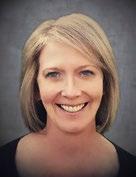
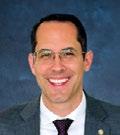
Cosumnes Community Services District is proud to welcome Tim Ogden as its new General Manager. Ogden has over two decades of leadership experience in city management, having served as City Manager for Brentwood, Manteca, and Waterford. Throughout his career, he has successfully led initiatives to expand fire protection services, develop parks and trails, and attract new business opportunities to growing communities. He is also a dedicated advocate for community engagement, having launched leadership academies, hosted public forums, and facilitated community-wide surveys. His collaborative leadership style and strategic mindset align well with the district’s commitment to delivering high-quality parks, recreation, and fire services to the residents of Elk Grove and Galt. Ogden officially joined the district on April 30 and is already making strides toward long-term excellence and community-centered service.
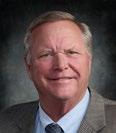
Hayward Area Recreation and Park District proudly honors James “Jim” Wheeler with induction into the CPRS Hall of Fame following his remarkable fiftyyear career dedicated to parks and recreation. Beginning in 1974 as a river lifeguard, Wheeler rose to lead major recreation operations in Nevada City and San Francisco before heading H.A.R.D.— the largest recreation and parks district in California. Wheeler has held prominent NRPA and CPRS leadership roles and his achievements extend beyond parks to the American Red Cross, Masters Swimming, and community sailing programs. His induction celebrates a legacy of visionary leadership, mentorship, and unwavering commitment to public service.

The Alameda-Contra Costa Transit District (AC Transit) has appointed Salvador “Sal” Llamas as its new General Manager and CEO. Llamas began his tenure with the district in 2012 as Director of Maintenance and was promoted to Chief Operating Officer in 2017. Over the past decade, he has built strong relationships with AC Transit’s 2,300 employees and
demonstrated deep knowledge of the Bay Area’s unique transit landscape. According to Board President Diane Shaw, his understanding of operating and capital budgets, along with his solutions-oriented leadership, distinguished him as the ideal candidate to navigate the district through ongoing fiscal and organizational changes. Llamas is known for his hands-on approach, operational expertise, and commitment to delivering reliable and sustainable public transportation.

Frank Nuñez has been appointed to represent Division 2 on the Vista Irrigation District Board of Directors. A lifelong Vista resident and local sales manager, Nuñez brings a strong connection to the community and a passion for public service. He was selected unanimously from two applicants during a special board meeting on April 21, 2025. “I am honored to serve and committed to the district’s continued success,” Nuñez said. “I look forward to working collaboratively with fellow board members and serving as a trusted advocate for residents and businesses in division 2.”

Jeffrey Robertson has joined the Calaveras County Water District (CCWD) Board of Directors. A resident of Murphys since 2007 and full-time retiree since 2018, Robertson brings an extraordinary range of leadership experience to the board. He spent 20 years in the U.S. Department of State as a Senior Foreign Service Officer, serving across the Middle East, Africa, and the Pacific Islands. Locally, Robertson is an engaged community member, serving on the board of Habitat for Humanity Calaveras and as a member of the Angels-Murphys Rotary Club. He holds advanced degrees from Harvard
and the National Defense University. Robertson’s global experience and passion for community development make him an asset to CCWD’s mission of providing reliable, high-quality water service.

After 27 years of transformative leadership with the Desert Recreation District (DRD), General Manager Kevin Kalman announced his retirement, beginning in July. Kalman began his service to DRD in 2011. His leadership laid a foundation for thriving programs, safe parks, and strong community ties that will carry forward for years to come. “For me,
this has never just been a job, it’s been a true calling,” said Kalman. “DRD is more than an organization, it’s a community.”



California Special Districts Association members now have access to new benefits with Amazon Business, including free Business Prime (up to a $3,499 value).
Amazon Business provides the selection, convenience, and value customers have come to know and love from Amazon, with solutions designed to meet the needs of CSDA members.
Benefits include:
• Free Business Prime Membership - Fast, FREE shipping and unlimited users per account
• Pay by Invoice - $5,000+ line of credit
• Exclusive Discounts- Save up to 25% off thousands of essential items

Visit our website for information about how to open a new Amazon Business Account or link your existing account to your membership to start saving today!
https://www.csda.net/amazon-business
For more than 80 years, we have partnered with public, private and government agencies in California to help their communities thrive.

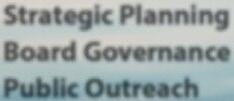

(And How It’s the Business Strategy You Can’t Afford to Ignore)
By Brad Montgomery, Keynote
Speaker for the 2025 CSDA Annual Conference & Exhibitor Showcase

CSDA Annual Conference & Exhibitor Showcase Keynote Speaker:
Brad Montgomery
Brad Montgomery
Keynote Speaker, Entrepreneur, Author & Podcaster
Not long ago, I was speaking to a group of engineers. I asked, “Who’s gotten a genuine compliment at work this week?” Crickets. One manager finally stood and thanked her colleague for calmly solving a crisis. You could feel the shift in the room. That simple act of recognition changed the entire energy. And it reminded me: Encouragement is a game-changer.
Encouragement as a business tactic is the low-hanging fruit when it comes to improving performance.
Encouragement isn’t fluff—it’s a serious business tool. Gallup tells us employees who feel recognized are more productive and less likely to quit. McKinsey found that over
half of employees who quit their jobs did so because they didn’t feel valued. The ROI? Huge.
It doesn’t take a fancy budget, a major policy shift, or an app. What it takes is intention. Encouragement is a strategy that’s available to every leader, every day. The question isn’t can we use it—the question is will we?
1. We all crave it. Everyone wants to feel seen and significant. When leaders meet that need, people do better work—period. In my keynotes, I often ask audiences to think of a moment when they felt appreciated. Their expressions change instantly. They sit up straighter. They smile. Because we all have that memory tucked away: a boss who noticed our extra effort, a colleague who said thank you at just the right time. It’s human nature. We’re wired for belonging.
2. It helps the giver too. Studies show that giving praise lifts the mood and engagement of the encourager as much as the recipient. In other words, encouragement isn’t just good for your team—it’s good for you. It builds connection, trust, and momentum. It turns “managers”
into leaders. When you start noticing the good in others, your entire perspective shifts. It’s a leadership move that pays off in both directions.
3. We underestimate its impact. We assume people don’t notice or don’t care—but science says otherwise. Small gestures have big influence. We are more influential than we think. I once coached a supervisor who told me, “I don’t say much—I figure if they’re not hearing from me, it means they’re doing fine.” But when she tried offering just a few words of encouragement each day, nothing fancy, just noticing effort, her team started performing at a higher level. Not because their skills changed, but because their motivation did.

annual reviews or official awards. But the best time to recognize someone is… right now. Encourage your team to share wins with each other. Make celebration part of your culture—not just something you do when there’s cake.
Encouragement fuels performance, retention, morale, and even accuracy. It’s a soft skill with hard impact.
Encouragement isn’t a warm fuzzy—it’s a performance tool. It changes people. It changes teams. It changes numbers. And it starts with you. So go ahead: Compliment someone today. Be intentional. Be specific. Be strategic! And above all, be generous with your words. You’ll be shocked how far they travel. One more thing: If this feels simple, that’s because it is. But simple doesn’t mean insignificant. In a world of KPIs, quarterly goals, and bottom lines, the most transformative tool you have might just be the words, “I see you, and you’re doing great.”
• Make encouragement a daily habit. A quick “Great job on that call” or “I noticed your improvement” goes a long way. It doesn’t need to be a TED Talk. In fact, short and specific is often more effective. “I saw how you handled that tough client—really professional under pressure.” That takes 10 seconds. But the impact lasts way longer.
• Celebrate progress, not just perfection. Point out effort and growth, not just wins. That means noticing the intern who’s learning fast. The team member who spoke up even though they’re shy. The manager who kept the project on track. Perfection is rare. Progress is everywhere—if you’re looking for it.
• Talk about it in your meetings. Ask: “Are our teams feeling seen?” If not, start there. Too often we wait for
Encouragement is free. It’s fast. It’s powerful. And it’s waiting for you to use it.
Brad Montgomery is a business keynote speaker who teaches organizations how to harness encouragement to boost performance. (Oh, and his audiences think he’s really funny.) He will be the keynote speaker on Wednesday, August 29 at the CSDA Annual Conference & Exhibitor Showcase in Monterey. CSDA would like to thank our Alliance Partner, the Special District Risk Management Authority, for being the keynote sponsor for this address. Learn more about Brad Montgomery at bradmontgomery.com.




By Karin R. Freese, PhD, MBA; CEO, Del Puerto Health Care District
In the world of special districts, newly elected or appointed board members bring fresh perspectives, passion for public service, and, often, significant challenges to team cohesion. The turnover of board members can upend strategic momentum, strain relationships with the general manager, and destabilize governance if not thoughtfully managed. Relationship building isn’t just a soft skill—it’s foundational to forming high-functioning governance teams.
Every special district faces the risk of mission disruption due to governance turnover. Research reveals new board members often arrive with limited experience in public service leadership or strategic oversight. Moreover, some come with personal agendas or misunderstandings about governance versus management. This disconnect frequently leads to friction between board members
and executive staff or among directors themselves. The strength of the board-general manager relationship, and among directors, is directly tied to the board’s effectiveness in advancing district goals.
The first weeks of a new director’s term are critical. Special districts must prioritize structured onboarding which introduces new board members not just to policies and financials but to people, roles, and purpose. Onboarding should:
• Clarify the distinction between governance and management
• Highlight the district’s strategic priorities
• Offer opportunities for informal interaction with other board members and staff
• Introduce relevant laws, ethics requirements, and Brown Act compliance
Onboarding should also frame service on the board as a shared responsibility rather than an individual platform. This helps set the tone for constructive collaboration and reduces the likelihood of interpersonal conflict later.
Trust is the most cited prerequisite for effective governance teams. Newly elected officials need to feel their questions are respected and executive staff are being transparent. Conversely, general managers and returning board members must trust new directors are acting in good faith—even when they challenge the status quo. Transparent communication means sharing background information early, acknowledging uncertainty when appropriate, and following up on inquiries. General managers can build credibility by offering clear, consistent reports and creating time for open dialogue during or outside of board meetings.
Creating a collaborative board culture requires intentionality. General managers and board chairs should model and reinforce behaviors such as:
• Listening with curiosity
• Asking clarifying questions before reacting
• Framing disagreements around values and mission
• Encouraging multiple perspectives without escalating conflict
When team members assume good intent and acknowledge each other’s contributions—even during disagreement— they are more likely to stay focused on long-term strategy rather than short-term disputes.
Every time a new director joins the board, the team dynamic shifts. It’s crucial to reaffirm governance norms as part of the transition. These norms include expectations around meeting conduct, communication outside of meetings, treatment of staff, and how the board speaks with “one voice” after decisions are made.
Districts which institutionalize governance agreements, codes of conduct, or board member compacts find it easier to navigate turnover. These tools make implicit expectations explicit—and enforceable—and help board members commit to team function rather than personal agendas.
Elections often create tension. Incumbents may feel defensive; new directors may feel the need to prove themselves. Relationship-building means acknowledging these emotions without letting them drive behavior. General managers and board chairs can help de-escalate potential conflicts by:
• Creating space for directors to share their motivations and aspirations
• Encouraging informal gatherings (e.g., site tours, community events) to build rapport
• Using one-on-one check-ins to understand concerns or tensions before they surface publicly
These relational investments pay dividends in smoother meetings, greater collaboration, and increased retention of both board members and executive staff.
Governance is a team sport. When relationship building is neglected, special districts risk dysfunction, turnover, and mission drift. When it’s prioritized, districts foster strong teams capable of leading through complexity, change, and challenge.
Relationship building with newly elected board members is not just about being nice. It’s a disciplined, strategic practice empowering general managers to lead, stabilizing governance, and ensuring the district remains focused on what matters, most—serving the community with excellence.
By Kristin Withrow, Communications Specialist, California Special Districts Association
The annual student video contest that challenges the nation’s high school students to learn about special districts continued to grow in 2025, with students from 30 states contributing entries between January and March. Students provided a 60-second video highlighting what they learned about special districts.
The contest uses the Districts Make the Difference social media pages on Facebook, Instagram, Twitter and LinkedIn
to spread the word to the public, including special districts, legislators, students, and teachers, across the country. The program’s popularity provides a boost to viewership, resulting in expanded awareness of the critical work and essential services provided by special districts across the U.S.
Watch the videos and learn more at www.districtsmakethedifference.org/video-contest.
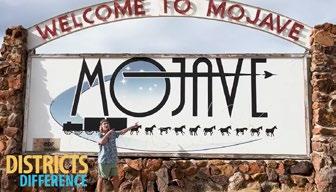
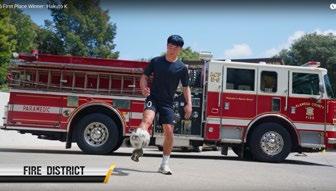





Join BBK’s Advanced Records Center for a webinar series designed to help public agencies confidently apply exemptions under the Public Records Act.
Live every 2nd and 4th Tuesday at 12:30 PM PT through 2025.

Register your agency today


By Melanie Mow Schumacher, Soquel Creek Water District
On California’s central coast, Soquel Creek Water District faced a daunting reality. The over-drafted groundwater basin, the community’s sole source of drinking water, was being contaminated by seawater, threatening the long-term sustainability of the region’s water supply. As a small special district with limited resources but a deep commitment to providing a reliable water supply while protecting public health and the environment, the district was determined to act decisively. Rather than shrink from the magnitude of the problem, they leaned into it, seeking an innovative, community-focused solution to ensure water security for generations to come.
After efforts to develop a joint regional desalination project fell short in 2013, the district embarked on a 13-month public planning process to explore alternative supply options. This process led to developing the Community Water Plan, a strategy grounded in sustainability, community input, and scientific rigor. The plan identified purified recycled water for groundwater replenishment as the most viable and effective solution. By 2015, they initiated feasibility studies and technical evaluations to assess the potential of turning treated wastewater into a source of purified water that could safely return to the aquifer—this concept became Pure Water Soquel (PWS).
One of the most distinctive and successful components of the district’s approach was its commitment to community outreach. Without a permanent demonstration facility, the district launched a mobile education trailer. This traveling interactive exhibit brought the science and safety of water reuse directly to neighborhoods, schools, and events. This mobile unit became crucial in educating the public, dispelling misconceptions, and building trust. In fact, the trailer garnered national recognition for its effectiveness in public engagement. Tasting purified water is crucial to foster community acceptance. So, a component of the mobile unit was to hand out bottled purified water (donated by the Orange County Water District, which has been doing a similar project since the 1960s).
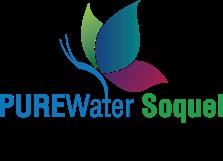
As PWS gained momentum, they wanted a logo that would reflect the transformational nature of the project. The result was a butterfly logo, symbolizing metamorphosis— wastewater transformed into purified water and a community transformed from vulnerability to resilience. The butterfly represents the project’s spirit: bold, hopeful, and rooted in positive change. It also resonated strongly with the community, reinforcing that great transformation is possible with vision and perseverance. The butterfly logo lives on not just as a symbol, but as a legacy: A small district’s bold transformation toward a sustainable future.
With increasing public understanding and support, the district moved forward with detailed planning, environmental review, regulatory coordination, and design. The process included working closely with state and federal agencies and engaging in rigorous scientific and technical validation.
By 2018, the project had received environmental approval, and in 2020, the project was breaking ground for the recharge wells. In spring 2021, construction began on the
pipeline system that would carry the source water to the purification facility and send purified water to the recharge wells. In winter 2021, the advanced water purification facility broke ground.
Pure Water Soquel purifies wastewater from the City of Santa Cruz through a multi-barrier treatment process, including microfiltration, reverse osmosis, and ultraviolet light with advanced oxidation, and uses it to replenish the over drafted groundwater basin.
The result is a sustainable, drought-resilient water supply that protects the basin, secures the community’s drinking water, and represents a new chapter in integrated water management for California.
A key factor in the project’s success was the district’s ability to secure significant outside funding, particularly for a small agency. Through strategic planning and dedicated effort, the district was awarded over $95 million in grants and more than $138 million in low-interest loans from agencies such as the California State Water Resources Control Board, the U.S. Bureau of Reclamation, and the EPA’s WIFIA program.
This remarkable funding success enabled the district to move forward with construction and implementation while minimizing the financial burden on local ratepayers—a testament to the district’s strategic leadership and collaborative spirit.
Pure Water Soquel demonstrates what is possible when small agencies dream big and follow through with creative outreach, cutting-edge innovation, and a level of collaboration beyond their small size. The district has addressed a local environmental crisis and created a replicable model for other communities facing similar challenges.
Today, the district continues to share lessons learned and mentors other agencies pursuing potable reuse, ensuring that the ripple effects of this transformational project continue to grow far beyond the Santa Cruz MidCounty Basin.

By Brenda Viola, Keynote Speaker for the 2025 CSDA Board Secretary/Clerk Conference
At this year’s CSDA Board Secretary/Clerk Conference in October in beautiful Santa Rosa, I am thrilled to deliver two powerful and transformative sessions designed specifically for those who give so much of themselves in service to others.
• Keynote Address: Settle Your Worth and Launch the Life of Your Dreams
• Breakout Session: The Public Servant’s Guide to Banishing Burnout

While each session carries a distinct tone (one deeply inspirational, the other powerfully practical), they share a heartbeat: a call to reconnect with you.
The role of a Board Secretary/Clerk is filled with critical organizational and procedural details that has you checking off to-do lists to report on the last meeting, preparing for the next meeting, and juggling competing priorities to keep things on track. It’s easy to lose touch with the one person you’re guaranteed to spend your entire life with: yourself.
Settle Your Worth and Launch the Life of Your Dreams will invite you to pause. To breathe. To listen to that internal check-engine light you may have been ignoring. The Public Servant’s Guide to Banishing Burnout will teach you how to watch for burnout creeping in, hone your internal alarm to give you a warning, or simply the quiet whisper of your soul asking for attention. You’ll gain tools to answer that inner call with confidence and compassion.
would often linger into the wee hours of the morning. My colleagues and I were exhausted and nearing burnout. You might be, too. What are two of the markers of burnout? Cynicism and inefficiency.
The demands at work weren’t going to change, but how I responded to the stress needed to. So, I began learning to first help myself and then others manage life in a more positive (and powerful) way.
I always say, “I have to live it to give it” so get ready for real talk, deep insights, and healthy doses of humor to make our time together enjoyable.
What You’ll Walk Away With:
The demands at work weren’t going to change, but how I responded to the stress needed to. So, I began learning to first help myself and then others manage life in a more positive (and powerful) way.
You may wonder what inspired these two talks. The answer? Real life.
I worked as a public information officer for a municipality just outside of Philadelphia for over a decade. My mentor was Eileen Trainer, a legendary municipal clerk who taught me everything I know about public service, grace under pressure, and the importance of a good laugh to alleviate stress. And there was plenty of stress!
We had fourteen elected officials and, with each wanting “face time” on the government access TV channel, meetings that could have wrapped up in a couple of hours


• Practical tools for boundary-setting and self-care
• A renewed sense of your value and purpose
• Encouragement to stop settling for less—at work, in relationships, and in life
• Inspiration to dream again and take bold steps toward those dreams
As public servants, your work is noble and necessary for the greater good. But no one can pour from an empty cup. Just like the airline safety reminder to put your own oxygen mask on first, these sessions are your invitation to do just that. Refuel your passion. Reconnect with your worth.
Return to your work and life with more to give—because you’ve finally given to yourself.
I can’t wait to meet you, encourage you, and equip you. All I ask is that you bring an open heart.
Let’s rise together.
CSDA is pleased to bring Brenda Viola to our 2025 Board Secretary/Clerk Conference this year. Brenda is an award-winning Public Information Officer, former news anchor/ producer, author, and inspirational speaker whose career led to founding Vici Communications LLC in 2022. Driven by the mission to help people conquer challenges, Brenda delivers transformational on-site and virtual programs for personal and professional growth, earning praise for her highly rated keynotes and workshops.

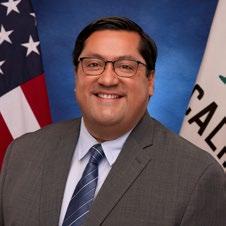
CSDA: What is the best way for special districts to create relationships with your office? Also, how should special district staff share updates with you and your staff?
Special districts serve an important role in Senate District 7, which is home to multiple districts that cover transportation, public safety, utilities, parks, and more. We already have forged close relations with several special districts within my constituency and want to support their efforts in serving our communities. I encourage those who would like to connect to reach out to my office and we will connect you with the appropriate staffer.
CSDA: How has your background in local government informed your role as a Legislator, and in particular, your role as a member of the Senate Local Government Committee?
Before I was elected to the State Senate, I served as Mayor of Berkeley, where I also spent a couple of years as President of the Association of Bay Area Governments, overseeing the approval of the Regional Housing Needs Allocation for the Bay Area. It taught me the importance of balancing the needs of the region while respecting the autonomy of individual cities. No city is in its own bubble – their actions have a ripple effect on surrounding areas. As a member of the Senate Local Government Committee, my experience as a former local official gives me insight into how the State can best support local jurisdictions and foster better relationships and cooperation between different levels of government.
CSDA: What are your policy priorities for your first year in office and do you have any that are long term?
Among the first actions the Senate took this legislative session was responding to the devastating LA fires and protecting Californians against damaging actions from the federal government. Beyond that, my policy priorities are
supporting immigrant rights, including SB 81, which will improve privacy protections in healthcare facilities. I am also working on supporting public transit, with a $2 billion funding request to support transit agencies statewide, and SB 63, which would place a revenue generating measure for the Bay Area on the 2026 ballot. Another priority of mine is housing production, and I have introduced several bills to streamline permitting and reduce barriers to housing development.
CSDA: What specific challenges exist for communities in District 7?
The two most common topics constituents have brought up are cost of living and public safety. As Chair of both the Senate Public Safety and Human Services Committee, I recognize the intersection of these two issues, and the need to have a strong safety net and opportunities for people that will help reduce crime rates. I have been working with local leaders on better coordination around public safety, and we have seen State support such as an influx of CHP officers in Oakland help with reducing crime and breaking up organized crime cells.
CSDA: Your State Senate district includes special districts of all types providing a range of essential services. What do you see as the value of these local agencies and are there any specific public policy opportunities or threats they should keep in mind?
Our local special districts play a key role in providing services to our communities and have more intimate knowledge of local needs and issues. Many of these agencies face budgetary shortfalls, and I am concerned about the impacts this could have in continuing the high standard of services these special districts provide. I am committed to supporting funding, as not providing funding now will end up becoming more costly in the long run. I believe this provides an opportunity to show how valuable special districts are, which will help make the case as to why we should continue funding these programs.



By Morgan Leskody, Communications Specialist, California Special Districts Association
On crisp fall mornings in Santa Clara County, biologists from Valley Water can be found waist-deep in cold, rushing creek water. They’re not out for sport, they are in search of something elusive and essential: the Central California Coast Steelhead, a federally threatened species whose presence signals the health of the entire watershed.
Armed with nets, waterproof gear, and electrofishing equipment, the team monitors eight local creeks, tracking juvenile steelhead numbers, stream conditions, and water quality. Their goal is more than data collection—it’s ecosystem protection.
“Every fall we conduct this monitoring to gather data on population estimates, abundance, and habitat conditions,” said Associate Biologist Olivia Townsend in Valley Water’s recent field video. “This year, the numbers are really high— it’s really exciting.”
And for good reason: In 2024, the density of juvenile steelhead tripled compared to the previous year, thanks in part to back-to-back wet seasons. Hundreds of fish
were recorded at twenty-one sampling stations within the Stevens Creek and Guadalupe River watersheds, marking a hopeful milestone for a species under threat.
The fish are briefly stunned using a safe and controlled method called electrofishing, allowing biologists to count, measure, and tag them before releasing them back into the water. These tags enable researchers to track the steelhead’s journey from inland creeks to the San Francisco Bay and ultimately to the Pacific Ocean.
This annual monitoring is part of Valley Water’s FAHCE Program—short for Fish and Aquatic Habitat Collaborative Effort. The initiative balances the region’s water supply needs with the ecological necessity of maintaining fishfriendly waterways.
The program’s core objective is to create stable steelhead populations in the face of ongoing environmental challenges like drought, urban development, and climate

“We want to see a stable and self-sustaining steelhead population,” Senior Biologist Les Layng emphasized. “Seeing fish swimming in our creeks tells us our stewardship is working.”
Les Layng, Senior Biologist
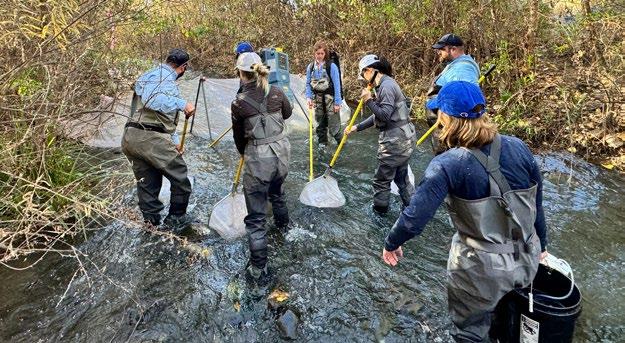
change. Biologists and engineers work together to manage stream flows, remove migration barriers, and restore spawning habitats.
The behind-the-scenes work of these biologists was recently brought to life in the Valley Water video “A Story of Resilience,” published on the Valley Water YouTube channel. Through stunning visuals and candid field interviews, the video showcases the physicality, precision, and passion required for stream monitoring—helping connect the community to the important work of the Valley Water team.
Clambering over slippery boulders, collecting fish under fast-flowing currents, and recording observations in the cold are all part of the job. “You don’t always know where you’re stepping,” Layng laughs. “Sometimes people fall in. But it’s totally worth it.”
For Valley Water, storytelling is an essential part of stewardship. The video raises awareness not only about the steelhead’s plight but also about the dedicated teams working to protect them, demonstrating how compelling narratives can engage a broader range of community stakeholders.
This work underscores the critical role special districts like Valley Water play in local environmental health. As a water agency responsible for flood protection, water supply, and environmental stewardship, Valley Water’s efforts ripple far beyond fish. Their work supports biodiversity, informs policy, and strengthens community resilience.
The impressive steelhead numbers this year offer a powerful reminder: Thoughtful, data-informed conservation works. And with public engagement and consistent investment, the vision of thriving, fish-filled creeks isn’t just possible—it’s already in motion.





At SDRMA, we support California special districts with risk management services and resources that are designed specifically with your unique needs in mind. From Workers' Compensation, Property and Liability, and Health Benefits, our programs help cover your agency when an injury or a claim happens. Join the pool that understands our members and keeps you and your employees at the forefront of all we do

This summer, don’t face your risks alone With decades of experience, SDRMA can provide: proactive risk management financial stability and transparent performance member-driven governance tailored coverage for your unique operations
Scan the QR code to request a quote today




By: Enriqueta Castro, CSP, SDRMA Risk Control Manager
Just like in sports, special districts rely on a healthy, highperforming team to achieve their goals. An effective injury and illness prevention program (IIPP) is your defensive line—it’s the playbook that protects your employees. The power of the IIPP starts with identifying and evaluating workplace hazards. This process provides a road map to determine potential hazards, identify Cal/OSHA regulations, and develop a game plan on how to protect your employees. Let’s look at all the elements of the IIPP. Please note, the information provided is general in nature, we recommend a thorough review of the California Code of Regulations section 3203 of Title 8 when developing or revising your IIPP.
The hazard assessment is the heart of an effective IIPP. Gathering this information sets you up for success. This process is critical when first developing your IIPP. It’s also required when:
• New substances or processes that present potential new hazards are introduced into the workplace.
• Previously unidentified hazards were recognized.
• Occupational injuries and illnesses occur.
• Workplace conditions warrant an inspection.
To continue to identify unsafe conditions, periodic inspections are also required to evaluate physical hazards, use of hazardous materials, and safe work practices.
Employers typically agree that everyone has a responsibility to be safe; but to be successful, responsibilities and accountability go together. The IIPP Administrator must be given the authority to oversee and manage the IIPP; however, true success happens when managers and supervisors understand how important their roles are and how their leadership is critical to an effective program.
Here’s where all your hazard assessment work comes into play. Cal/OSHA requires employers to have a system
continued >
to ensure employees comply with safe and healthy work practices. Through your hazard assessment you have the information needed to determine other Cal/ OSHA requirements, develop written programs, develop policies and procedures, and establish responsibilities and accountability.
Now that you’ve established the required policies and procedures it’s time to think about how you communicate your district’s commitment to safety and your expectations for employees. This is the time to think about the critical role of managers and supervisors and how they influence employees.
The regulation provides specific requirements to include in your program. You must communicate about safety in a readily understandable manner. You must encourage employees to inform you of identified hazards without fear of reprisal. Other recommended procedures include safety meetings, training programs, posting, written communications, anonymous hazard reporting options, and safety committees.
Your IIPP must include your commitment to correct unsafe or unhealthy conditions, work practices and work procedures in a timely manner based on the severity of the hazard. This requirement falls hand-in-hand with the hazard assessment requirements. An unsafe condition can be identified through a variety of avenues, such as reported by an employee, through a hazard inspection, through an accident investigation, to name a few. The critical component is that the district has a system in place to document the hazard correction process.
Employers are required to include their procedures on investigating occupational injury and illnesses. This
section can be used to educate employees on what to do in the event they are injured as well as the investigative process. The goal of the investigation is to identify contributing factors and develop prevention measures to reduce reoccurrence.
The hazard assessment is the greatest tool to help identify your employee’s job-specific hazards. This will help identify the training topics required. Supervisors must also be trained on the safety hazards to which employees under their immediate direction and control are exposed. In addition, training must be provided:
• When the IIPP is first established.
• When new employees are hired.
• When employees are reassigned to a new area or task with no prior training.
• Whenever new substances, operations, or equipment are introduced.
Documenting and recordkeeping are essential for an effective IIPP. Cal/OSHA requires documentation on training, inspections, accident investigations, and program revisions.
Taking a fresh look at your IIPP is no easy feat; it takes strategy, focus, and commitment. It reflects a strong commitment to employee safety while helping reduce risk, injury-related costs, and downtime.
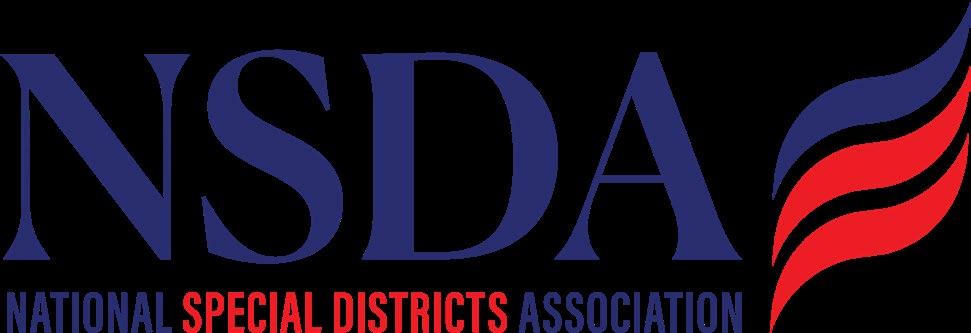
Big things have been happening with the National Special Districts Association in 2025. Our expansion from a coalition of special district associations to an Association actively gaining state-based association members as well as individual special district members has allowed us to step into a full range of advocacy and support roles for the nation’s districts.
In April, members of our Advocacy Committee, including CSDA’s Chief Executive Officer Neil McCormick and Chief Advocacy and External Affairs officer Kyle Packham, flew to Washington D.C. to meet with Legislators in support of cornerstone legislation advancing the formal definition of special districts into law. The Special District Fairness and Accessibility Act is the second version of this important legislation, introduced into the House of Representatives by Pat Fallon (R-TX) and Brittany Petterson (D-CO). This bipartisan act would require federal agencies to recognize special districts as units of local government, thus ensuring districts have access to all appropriate forms of federal financial assistance.
Showcasing the growing strength and cooperation of special districts, we welcomed news of the formation of the Texas Special Districts Coalition (TSDC). TSDC aims to bring together state and local special districts and district advocacy organizations representing the range of special district interests throughout more than 3,000 special districts in the state. We are proud to count TSDC among our members to further strengthen our national voice. In July, we brought together special district leaders at
our first Leadership Forum in Austin, Texas. Much like the CSDA Annual Conference, our Leadership Forum brought together experts and industry leaders to provide an opportunity for regional special district professionals to learn from others, connect with peers and expand their governance knowledge while learning about the broader legislative landscape affecting all special districts.
California Special Districts Association was a founding member of NSDA and remains vitally important to the success of our association. Our executive committee includes Ann Terry, CEO, Special District Association of Colorado currently serving as NSDA President, Frank Stratton, Executive Director, Special Districts Association of Oregon currently serving as Vice President, and Neil McCormick, CSDA CEO, past President of NSDA and currently serving as Treasurer. In addition, our Board Members represent special district associations in Florida, South Carolina, Texas, Utah and Wyoming.
Through the strong leadership of special district representatives, these key priorities drive our actions:
• Defining Special Districts into Federal Law (the Special District Fairness and Accessibility Act)
• Public Finance tools to help special districts secure essential project funding
• Ensure the U.S. Census accurately counts districtscritical for funding access
• Advocating for technical assistance for districts to navigate grant application processes
• Creation of a Congressional Caucus on Special Districts to educate lawmakers about essential services provided by special districts and the unique challenges they face
All CSDA members have access to NSDA resources, including our Grants Services program and federal legislative advocacy, through CSDA and can subscribe to CSDA Advocacy News for updates.




This article was adapted from Dr. Frank Benest’s Career Compass #113
As local governments respond to new realities and ever-changing circumstances, many organizations are experiencing a lot of uncertainty, employee anxiety, and productivity issues.
In fact, there is a lot of change. However, it is not just the amount of change. The big problem is that change is accelerating and is non-linear. Amid all this change, I believe that leaders must help create a sense of stability for employees. Stability is foundational if organizations are to effectively adapt to new realities.
Gallup has documented that 76% of all employees experience burnout at least “sometimes,” and 28% feel burnout “very often” or “always.” Burnout is especially a problem in the public sector because the demands from the public and elected officials keep coming regardless of the organizational capacity to respond.
An enduring mission creates organizational stability; core values which go unchanged; clear direction and goals; leadership that is predictable, steady, and calm; consistent priorities from the governing board and top management; and stable work relationships.
Stability provides a safe and secure environment that allows organizational members to adapt to new demands and opportunities. It minimizes a sense of uncertainty and disruption and provides some measure of predictability and optimism as change occurs.
Leaders must consider the conditions people need at work to be productive and adapt to changes. The primary condition is a sense of stability. Here are 10 ideas to promote a sense of stability:
1. Emphasize the Mission and Core Values: While there may be internal improvement initiatives and new external change efforts, leaders must keep the team centered the core values. Additionally, it’s important for leaders to tie work to the mission.
2. Limit Priorities: Avoid frequently shifting priorities and focus on longer term planning. Most organizations cannot manage more than three to five organizationwide priorities. Guide governing board and teams to maintain focus and discipline.
3. Beta Test New Initiatives: If shifting priorities are unavoidable, resist the temptation to fully implement new organization- or city-wide initiatives.
4. Clarify Direction but Allow Flexibility: Be clear about goals but flexible on how to achieve them. With adaptive challenges, set direction, help the team take a few steps forward, see what works and what doesn’t, pivot, and learn as you go.
5. Be Present: Show up as a leader who is calm, focused, curious, encouraging, and supportive. Being present demonstrates commitment and steadiness.
6. Ask, Listen, Respond: Ask open-ended questions, listen intently, and respond as appropriate. Being empathetic and understanding employee’s needs fosters connection and trust.
7. Promote safety and belonging: Employees spend most of their waking hours working. More than ever they want a sense of belonging and connection. This can be fostered by ensuring they understand:
» They work for an organization with a purpose.
» Each person matters.
» They are valued as a person (not just for what they produce).
» They are supported.
» Their opinion counts.
8. Keep teams intact: Teams create a sense of belonging and allow individuals to see how collective action can make a difference in addressing a big problem. They also help connect individuals to the larger organizational purpose.
9. Model the way: Leaders must model positive behaviors that promote stability. These behaviors include calmness, steadiness, optimism, hope, and caring.
10.Celebrate those who embody core values: You certainly want to celebrate smart risk-takers and innovators who help the organization adapt. However, you also want to celebrate those who embody and promote enduring organizational values. To recognize organizational “stabilizers,” you can celebrate their contributions in simple ways.
Effective leaders must differentiate between stagnation and stability. Stagnation results when adaptation is resisted, whereas stability is achieved when the mission, values, and direction are clear, priorities are consistent, leadership is steady, and relationships are stable.
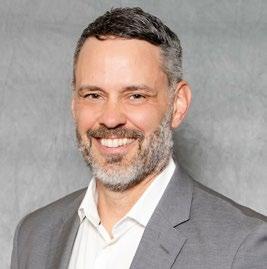
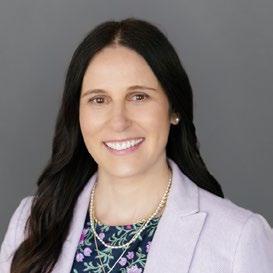




By Monica Curiel, Program Educator II and Maia Dean, Community Programs Manager, Chino Basin Water Conservation District
When the Chino Basin Water Conservation District (CBWCD) created the Waterwise Community Center in 2018, the goal was clear: to create a hub for water conservation education and resources. The next step? Bring the community through the doors.
Located in Montclair, about thirty miles east of Los Angeles, the Waterwise Community Center serves a diverse population. As of 2023, 72% of Montclair’s 37,865 residents identified as Hispanic or Latino, with nearly half speaking primarily Spanish. Despite efforts to appeal to Spanishspeaking residents by providing bilingual resources, this demographic was underrepresented at CBWCD’s events and programs.
Recognizing the disconnect, CBWCD staff sought to develop a culturally relevant approach to engage this audience and create something that would resonate deeply with the community while also introducing them to water conservation.
In 2019, CBWCD staff conceived the idea of creating a customized version of Lotería, a beloved Mexican bingostyle game known for its iconic imagery and cultural significance. As a quintessential game in Mexican culture, families often gather and play Lotería, sharing laughter and tradition. Through the creation of a custom Lotería set featuring imagery inspired by the district’s garden, water conservation efforts, and community resources, staff believed the game could serve as both a cultural bridge and an educational tool.
For those who haven’t had an opportunity to play Lotería, its rules are simple. A caller announces images from a shuffled deck, and players mark them on their own “tabla” (playing card) hoping to win by forming lines or patterns much like bingo. It’s easy to play, visually captivating, and spans generations.
Unfortunately, due to the pandemic, efforts were paused until February 2022. When staff returned, they renewed their mission to make the community feel welcome. The Waterwise Lotería project was proposed to CBWCD’s General Manager and later approved unanimously by the Board of Directors with a budget of $8,000.
To design the deck, CBWCD hired a former intern in January 2023 to create fifty-four original illustrations. Each image was inspired by the district’s garden, local wildlife, water features, and educational themes, like aquifers, pollinators, and native plants. The result was a vibrant fusion of culture and conservation.
By January 2024, the finished Lotería sets were ready. To celebrate and promote them, CBWCD hosted a gallery exhibit in the Waterwise Community Center lobby. Framed works of art featuring card images were paired with interpretive texts explaining their significance, turning the space into an interactive, educational art installation.





The response was extraordinary. During the two-month gallery run, more than 1,400 people visited the center, many staying longer than typical exhibits to engage with the artwork and its messages. Front desk staff observed families discussing images, reading descriptions, and connecting personally with the display.
The first official Waterwise Lotería game night welcomed ninety-four attendees, most of whom had never visited the center before. Impressively, about 65% came after hearing about it from friends or family, proving the power of wordof-mouth and authentic community connection.
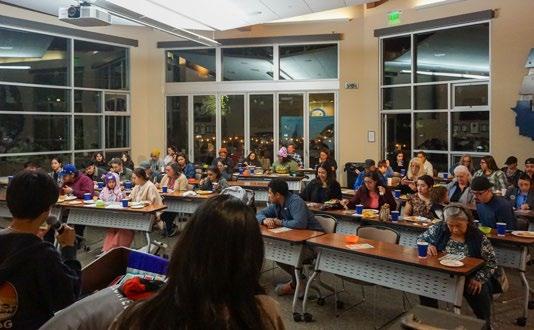
Waterwise Lotería represents more than a clever outreach idea, it embodies a shift in approach to public engagement. By embracing cultural relevance, CBWCD didn’t just promote water conservation; it made the Waterwise Community Center a truly welcoming, inclusive space.
The project has become a cornerstone of the district’s evolving identity. It’s a reminder that innovation in public service doesn’t always mean high-tech solutions. Sometimes, the most impactful ideas come from listening to the community, honoring its culture, and thinking creatively.
Through a joyful reimagining of a traditional cultural game, CBWCD has built trust, sparked dialogue, and deepened its connection to the people it serves. Waterwise Lotería is not just an event —it’s a movement, a celebration, and a model for meaningful engagement.

By Nick Clair, Attorney at Law and Dariia Zhestovskaia, Attorney at Law, Lozano Smith Attorneys at Law
On June 1, 2009, Air France Flight 447 was at 37,000 feet over the Atlantic Ocean when ice crystals formed on its airspeed sensors during a thunderstorm. The flight computers received conflicting data and the autopilot automatically disconnected. When the pilots took control, they had become so accustomed to automated flight that they were immediately disoriented. The co-pilot, thinking the aircraft was stalling, pulled back sharply—the exact wrong response that put the plane into a deep stall. For the next four minutes, the pilots couldn’t recognize what was happening as the aircraft fell 35,000 feet into the ocean. Despite this tragedy, autopilot technology has dramatically improved aviation safety and made modern air travel possible. Similarly, AI promises substantial benefits for special districts. However, the Air France case illustrates critical risks that accompany these benefits: overreliance on automated systems, failure to recognize when systems are receiving inadequate information, and skill degradation that impairs effective human oversight.
There are a number of parallels between aviation automation and AI adoption, but AI presents unique challenges. Autopilot systems evolved gradually over decades, allowing industries and professionals time to adapt. These systems, while sophisticated, follow predictable rules that trained pilots can understand. AI systems are fundamentally different. They operate as “black boxes” that even their developers don’t fully understand, and they’re being adopted at unprecedented speed. In April 2024, less than 2 years after ChatGPT was released, Microsoft found that 75% of knowledge workers globally use some form of AI at work. McKinsey’s January 2025 report revealed that 13% of workers have already offloaded at least 30% of their tasks to AI, with another 34% expecting to reach that threshold within 12 months. AI capabilities continue advancing rapidly, with the latest models exceeding expert human performance in some areas and increasingly able to plan, make decisions, and take real-world actions.
Many of the legal risks with AI adoption are more obvious, though complex to manage. Major legal issues related to the use of AI include data privacy, intellectual property, hallucinations, and bias in AI output. These concerns directly affect special district employees and California residents’ rights. Privacy guarantees remain unclear, copyright litigation is ongoing, AI “hallucinations” can create liability when users rely on fabricated data, and training bias raises Equal Protection concerns.
Skill degradation represents a significant concern. When district staff become dependent on AI for tasks like budget analysis, policy drafting, or public communications, they may lose the expertise needed to properly oversee these systems or perform these tasks independently. This creates a dangerous cycle: reduced human competency leads to less effective AI oversight, potentially resulting in poor decisions that expose districts to legal liability.
Algorithm aversion and automation bias present opposite but equally problematic responses. Some staff may reject AI recommendations entirely, even when beneficial, while others may uncritically accept AI output without proper review. For special districts making decisions about public funds, personnel actions, or community services, either extreme can lead to legally problematic outcomes.
Special districts can learn from aviation’s evolution toward safer automation. The airline industry didn’t abandon autopilot after Air France 447—instead, it improved training, enhanced pilot understanding of automated systems, and developed better protocols for humanmachine interaction.
Similarly, districts should focus on developing “AI literacy” among staff, ensuring they understand both capabilities and limitations of the systems they’re using. Just as pilots must understand autopilot systems and when to use them, district staff must understand how to properly utilize AI systems and critically review outputs. Districts must also establish clear policies for AI use that include regular review cycles. Unlike traditional technology policies that might remain static for years, AI governance requires frequent updates to address rapidly evolving capabilities and emerging risks.
The most consequential legal risks may be those arising from how special districts implement and manage AI systems—risks that mirror the Air France disaster.
Districts’ management staff should also keep themselves informed on the legal developments regarding AI, including data protection and intellectual property issues, to stay in compliance.
Most critically, districts should maintain robust human oversight structures and ensure staff are knowledgeable about and capable of effectively using AI systems.
Accountability gaps pose particular challenges for public agencies. When AI systems make or influence decisions, districts must be able to explain their reasoning to satisfy due process requirements and public transparency obligations.
The “bad data” problem compounds these risks. Just as Air France’s autopilot made tragic decisions based on faulty sensor data, AI systems can only work with the information they receive. When district staff use AI without providing crucial context, even sophisticated AI systems will produce flawed outputs.
The promise of AI to improve efficiency and service delivery for special districts is real, but realizing those benefits safely requires learning from other industries’ experiences with automation.
Attendees of the CSDA Annual Conference & Exhibitor Showcase can explore this topic at the August 26 breakout session, “Navigating the AI Tide: Legal and Ethical Implications for Special Districts.”
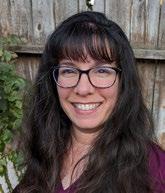
Questions Appear in CSDA Online Communities
Q: Alicia Marin, Office Manager, Santa Ynez Community Services District
“We are a small district with only two vehicles in our “fleet”. We are looking for information on what metrics other similar size districts use in order to replace aging vehicles. Do you have an actual policy? Or only upon board approval? If you are a district with approximately 10-15 or less vehicles, could you share either your policy or how you determine when/how to replace your aging vehicles?”

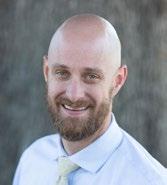
A: Cynthia Allen, PhD, CSDM, Vandenberg Village Community Services District
“We generally schedule the replacement of our utility trucks every seven years and heavy vehicles every 12 years. This can be pushed a year or two but, typically, at that point, maintenance costs surpass the depreciation expense of a new vehicle.
We use the California DGS Statewide Contracts for Fleet Vehicles to purchase our new vehicles.
A: Josh Byerrum, CPA, Managing Partner, Platinum Strategies, Inc.
“I don’t have an actual policy example to share, but most of my clients follow these general estimates for equipment replacement:
• Trucks (F150 & F250): 7–8 years
• Heavy equipment (dump trucks, trailers, etc.): 20 years
• Other equipment (arrow boards, portable air compressors, forklifts, etc.): 15 years
Typically, smaller agencies replace their trucks when they approach 80,000–100,000 miles. When purchasing a new vehicle, they submit a declaration of surplus property to the Board for approval.
It sounds like you have a clear direction, and I’d be happy to hop on a call to discuss any strategies with you. Let me know if that would be helpful!”
Engage with your peers and ask questions on CSDA’s Open Forum community!
https://www.csda.net/communities-home
CSDA Disclaimer: This section is not intended to be legal advice. Members should always seek legal counsel. The information contained here is for general reference purposes only.


By Ken Sansone, Senior Partner & Kyla Tengdin, Education & Outreach, SL Environmental Law Group
Water, airport, fire, sanitary and waste management districts can be impacted by PFAS contamination without knowing it. PFAS (per- and polyfluoroalkyl substances) are also called “forever chemicals” due to their environmental persistence and resistance to traditional water treatment. Manufacturers failed to warn consumers and the U.S. government of the risks associated with PFAS exposure, which include certain cancers, thyroid disorders, ulcerative colitis, infertility and more.
As a funding strategy to help mitigate damage, many entities, including special districts, are pursuing litigation against the manufacturers responsible for PFAS contamination. Hundreds of these cases have been consolidated into the Aqueous Film-Forming Foam (AFFF) multi-district litigation (MDL), recently resulting in landmark drinking water settlements from 3M, DuPont, Tyco and BASF totaling more than $14 billion. These settlements, while specific to drinking water providers, show PFAS manufacturers can be held accountable for contamination.
Claims for PFAS impacts beyond drinking water will continue to be litigated as part of the AFFF MDL and are expected to be resolved by future settlements or litigation. By exploring potential claims, districts may discover new funding opportunities.
Water districts are already feeling the financial impact of PFAS regulatory compliance. Many water providers nationwide are offsetting monitoring and treatment costs with funds from the drinking water settlements mentioned above. All eligible water systems are automatically included as participants in these settlements unless they successfully opted out by the deadlines in 2023. Water districts unsure of their settlement status should consult legal counsel to determine their next steps and avoid missing funding opportunities.
Airports were required to use aqueous film-forming foam (AFFF) containing the PFAS compounds PFOA and PFOS for emergency fire response and training exercises for decades without being warned of the risks. Now, airports may face expenses for transitioning to PFAS-free foams, testing, remediation, public communication, and potential third-party lawsuits over legacy contamination.
Fire districts may also be affected due to historical AFFF use. Since manufacturers didn’t warn of PFAS risks, training exercises were often conducted in open areas or unlined pits. Rainwater caused PFAS to leach from the soil, contaminating groundwater. Similarly to airports, these sites could already face costs, from replacing firefighting foam, to cleaning or disposing of contaminated equipment, to soil and groundwater remediation.
Although sanitary and public utility districts do not produce or use PFAS, these contaminants are often found in wastewater from residential, industrial, and sometimes stormwater sources. Traditional wastewater treatment cannot destroy PFAS, so contaminants may remain in the treatment residuals, called biosolids. Biosolids have historically been sold or reused as fertilizer, but several states now limit or even ban this practice due to PFAS concerns. Districts may see financial loss from the inability to sell the biosolids as well as increased disposal costs.
Given the widespread presence of PFAS in consumer products and biosolids, landfills often receive waste containing these chemicals, leading to contaminated leachate. To protect nearby soil and water, some landfills send leachate to wastewater plants for treatment, which may trigger high PFAS treatment costs for the plant. This could lead to new and costly disposal challenges for waste management districts.
The PFAS problem was created by companies that knew the risks but chose to continue manufacturing them recklessly for decades. Legal action can hold these manufacturers accountable for pollution while potentially providing funding for districts.
Districts considering legal action as a cost recovery strategy may benefit from early action. There is no guarantee that anticipated settlements for PFAS impacts beyond drinking water will include agencies that did not file their own lawsuits and agencies may be able to increase their potential settlement payouts by bringing their own legal action now. In fact, drinking water providers that filed suit over PFAS before the water systems settlements were announced will recover as much as 25% more than systems that did not. By considering all available funding options, special districts can make more informed and strategic decisions for their communities.
Oftentimes, districts can struggle with cashflow while awaiting grant or other financial disbursements. One agency hit particularly hard in this area is Resource Conservation Districts. Recently, CSDA Finance Corporation launched a Working Capital Financing Program specifically aimed to help RCDs:
• Alleviate cashflow issues with access to a working line of credit
• Pay contractors upfront, increasing the quality of bids received
• Massively reduce fees and processing times by utilizing a standard set of legal documents
For other district types, CSDA Finance Corporation has other interim financing solutions available. For example, we just assisted Desert Recreation District with a $5M Grant Anticipation Note earlier this year.

Visit csdafinance.net or call 877.924.2732 for more information or to connect with one of our expert consultants.



AllPaid www.AllPaid.com








Actuarial Retirement Consulting, LLC www.awenarc.com
Amazon Business www.csda.net/amazon-business
California CAD Solutions (CALCAD) www.calcad.com
California CLASS www.californiaclass.com
CPS HR Consulting www.cpshr.us
Utility Cost Management, LLC www.utilitycostmanagement.com

CSDA Finance Corporation www.csdafinance.net
Enterprise Mobility www.enterprisemobility.com
GovDeals www.govdeals.com
Special District Risk Management Authority www.sdrma.org

Streamline www.getstreamline.com
Umpqua Bank www.umpquabank.com

VC3 www.vc3.com
Atkinson, Andelson, Loya, Ruud & Romo www.aalrr.com
Best Best & Krieger www.bbklaw.com
California Bank of Commerce www.californiabankofcommerce.com/




Tri Counties Bank www.tcbk.com
Five Star Bank www.fivestarbank.com
Liebert Cassidy Whitmore www.lcwlegal.com
Richards Watson Gershon www.rwglaw.com
CSDA is pleased to announce the addition of GovDeals as a Business Affiliate with the National Special Districts Association (NSDA). When government agencies face the dilemma of how to navigate the waters of surplus disposition, GovDeals is a lifeline to help manage the sale of their surplus inventory. GovDeals prevents this process from becoming a drag on government time and resources. This endorsement means even more special districts across the country will have preferred member benefits.
to CSDA members for years. CSDA’s Surplus Marketplace transforms surplus assets and inventory from a burden to an opportunity – powered by GovDeals!
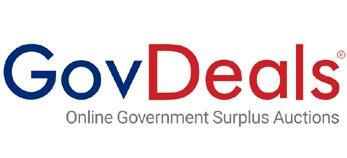
Specifically created for, and dedicated to, government agencies and their surplus disposition, GovDeals works with over 15,000 sellers utilizing the online auction platform. Nationally, they have completed over $4 billion in sales achieved by selling directly to more than 1 million registered buyers. Their online auction platform regularly generates higher net returns by delivering true market values.
As a CSDA Endorsed Affiliate, Govdeals has provided cost saving efficiency in buying and selling surplus inventory
Haven’t visited the CSDA Surplus Marketplace in a while? Find it at csda.net under Member Resources.
Brown Armstrong Accountancy Corporation www.bacpas.com
CalTRUST
www.caltrust.org
Centrica Business Solutions
www.centricabusinesssolutions.com
Cole Huber LLP
www.colehuber.com
Complete Paperless Solutions
www.cps247.com
Easeworks www.easeworks.com
Kosmont Financial Services
www.KosmontFinancial.com
National Demographics Corportaion (NDC) www.ndcresearch.com
NBS www.nbsgov.com
Nossaman, LLP www.nossaman.com
Redwood Public Law, LLP www.redwoodpubliclaw.com
River City Bank www.rivercitybank.com
SiteLogiq www.sitelogiq.com
Slovak Baron Empey Murphy & Pinkney LLP www.sbemp.com
Tyler Technologies, Inc. www.tylertech.com
Witt O’Brien’s www.wittobriens.com

